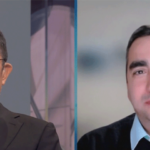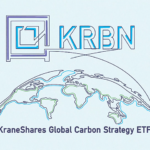How to Better Tackle Climate Change
An Op-Ed by Former Secretary of State, John Kerry

None of the toughest challenges that we face will be solved overnight or by government action alone. It is not that simple and, moreover, it is not who we are. The United States is a country that makes the market work and, notably in the case of climate change, we have the opportunity to make the market work in a way that creates record numbers of jobs to build our way back to a strong economy and shared prosperity.
It starts with the urgency of science as we now enter this decisive decade. Look at California today. We can see the haze on the East Coast. Fifteen of the biggest fires in California occurred in the last 18 years. The costs were tremendous with almost two million acres burned and $3 billion spent on the recovery. By 2100, dynamic flooding could affect more than 600,000 people and cause damage to the tune of $150 billion. Hurricanes Harvey, Maria, and Irma had cost the United States some $265 billion in property damage. Historic droughts are matched by historic floods.
That is the price from carbon pollution that we all have to pay. The issue is whether we will place a price on carbon pollution so we change behavior and incentivize action on climate change. Today, even as Europe raises its ambition, no country is getting the job done. The top three emitters in the world are China, Europe, and the United States, which contribute 14 times the greenhouse gas emissions of the bottom 100 countries.
A Saudi oil minister once said, “The stone age did not end because we ran out of stones.” The coal age will not end because we ran out of coal. The oil age will not end because we ran out of oil. One of the most significant ways that we can address climate change is through carbon pricing. This marks the clearest signal yet to influence economic behavior.
With carbon pricing, those causing emissions pay for the cost of damage. Without carbon pricing, we all pay the cost. Indeed, carbon pricing allows citizens, innovators, and companies to make independent decisions that drive their emissions reductions. There are 45 national and 25 subnational jurisdictions around the world that are already mandating carbon pricing initiatives, and Europe has been doubling down on its efforts.
The energy market is in the midst of an irreversible transformation. About twice as much was invested last year in renewable capacity all around the world than in fossil fuel generation. That was the third consecutive year in which renewable technology, notably wind and solar, made up more than half of the new capacity added to the grid in the United States.
I have no doubt that we will reach the low carbon economy we need. Paris sent a message to the market that almost 200 countries are each trying to lower their emissions. It is now the biggest market the world has ever seen with five billion users. It will grow to nine billion users in the next 30 years. There are one billion people on this planet without any electricity. It is the greatest manufacturing opportunity that the world has ever known.
The investment community has a role to play. Former Treasury Secretary Hank Paulson and the Nature Conservancy have published a major report that includes some critical mechanisms to close the biodiversity financing gap. On Wall Street, more is happening. For example, KraneShares, Climate Finance Partners and, IHS Markit created the first global price for a ton of carbon emissions by combining the three largest carbon emission market prices into one global price, giving governments, companies, and investors a benchmark to estimate the cost of their carbon footprint and incentivize further reductions in pollution and carbon emissions. This gives governments, companies, and investors a benchmark to estimate the cost of their carbon footprint and incentivize further reductions in pollution and carbon emissions.
The World Bank tells us that the price of a ton of carbon needs to reach at least $100 over the next decade if the international community is to meet the targets of the Paris climate accord. One way to reach that goal is with a new asset class that can act as a hedge against portfolio vulnerability in the face of climate change. Governments must do much more, but they cannot do it alone. Private sector investment is absolutely essential and within reach to ensure that we address climate change on this timeline.
John Kerry served as Secretary of State under the Obama Administration. He is Chairman of the Climate Finance Partners Advisory Board, sub-advisor to the KraneShares Global Carbon ETF.
This op-ed originally was published in The Hill on 11/19/20.
The KRBN ETF is distributed by SEI Investments Distribution Company (SIDCO), 1 Freedom Valley Drive, Oaks, PA 19456, which is not affiliated with Krane Funds Advisors, LLC, the Investment Adviser for the Fund, or Climate Finance Partners, the Co-Advisor for the Fund.

















